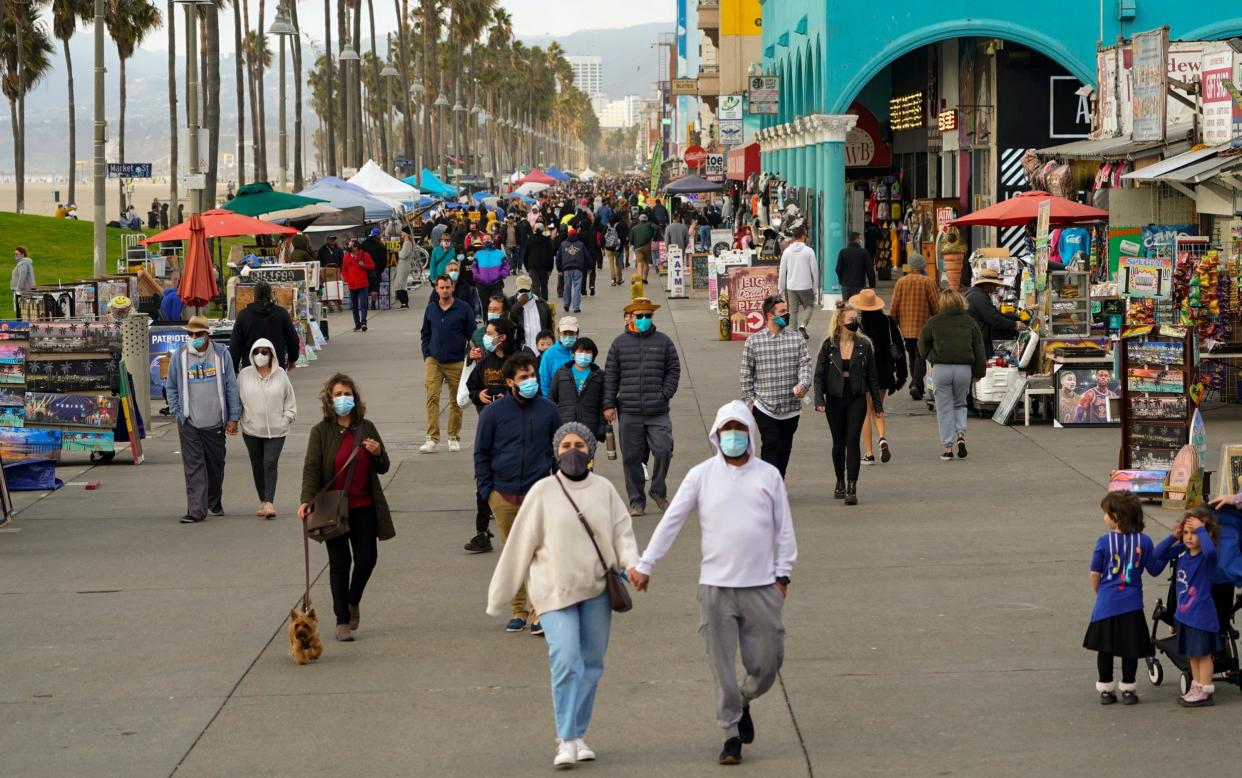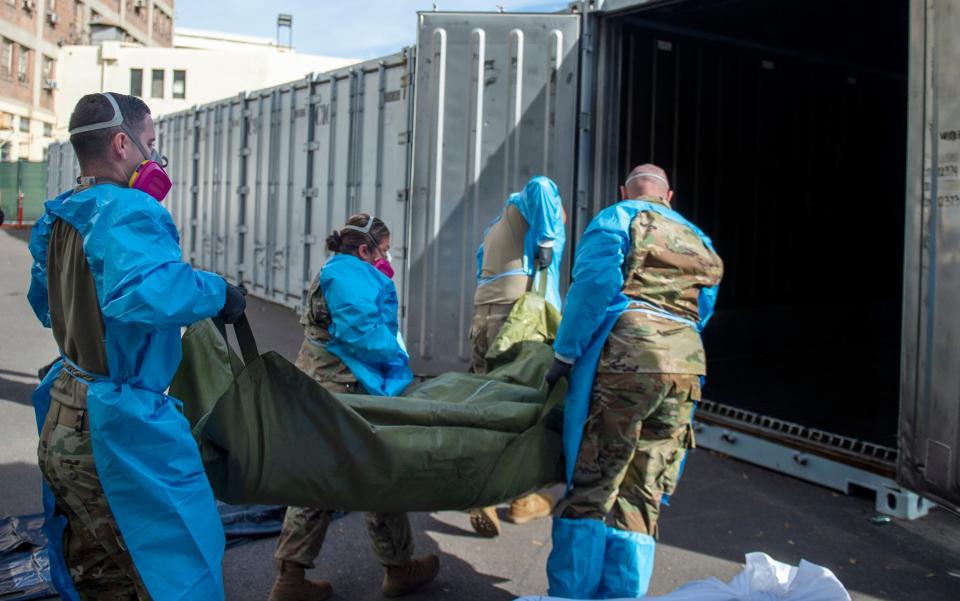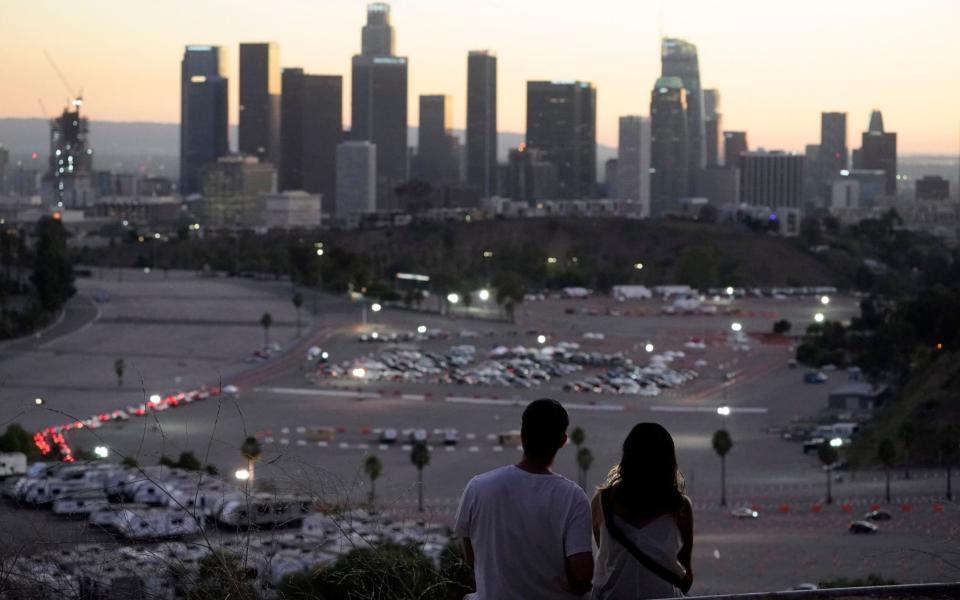How California overtook New York to become the US state with most coronavirus deaths

With its long warm summers, white sandy beaches and sparsely populated counties, Californians were certain they were living in one of the best settings to battle the virus.
But now the Golden State has overtaken New York for the most deaths and hospitals are reaching capacity, with health officials warning the toughest weeks are yet to come.
California was quick to respond at the start of the pandemic with strict stay-at-home orders, enforced mask wearing in public spaces and school closures, leaving scientists struggling to understand where the state went wrong.
Around 3 million residents have tested positive in California and over the weekend it confirmed that deaths had hit 32,960, just beating New York’s 32,725.
The latter has held its position as the state with the highest death rate since late March, although most of the fatalities were recorded in the early stages of the pandemic.
But in the past two months, California has begun inching toward a crisis. The situation is particularly worrying in Los Angeles, the first county in the US to reach more than 1 million cases.
“It is crazy because you can see people are getting a lot more relaxed and that nobody really cares,” says Jenna Ross, a social media manager for a beauty company.
“If you go to parks you have huge groups of people playing soccer and people are not following the rules very much.
“It is easy to distance yourself on Venice Beach but the boardwalk is super crowded and there are people not wearing masks. The hair salons and massage parlours are shut, yet the shopping streets are full of people.”
Since December 3, residents in regions where emergency hospital bed capacity drops below 15 per cent must stay at home unless leaving for work or local shopping. Grocery shops, banking, pharmacies and indoor retail can operate at 25 per cent capacity and gathering outdoors or indoors with other households is banned.
The restrictions currently apply in three out of the state’s five regions: Southern California, the Bay Area and San Jaoquin Valley.

But with many people going out regardless for retail therapy trips, surfing and picnics, doctors and nurses are now dealing with the fallout.
In LA county, a coronavirus-related death is now reported every eight minutes. The backlog of bodies in hospital morgues has forced air pollution officials to temporarily suspend the limit on how many bodies can be cremated in a day.
The excitement that came last month when Covid-19 vaccinations were first approved has since fizzled out as public health officials try and plead with residents to stay home.
The vaccine rollout has been patchy, and it can be difficult to find information on where jabs will be available and to whom.
California is still vaccinating health workers, and will attend to the elderly next. Dodger Stadium, the historic home to LA’s famed baseball team, has been given a new lease of life in the pandemic and is now one of the largest vaccination sites in the US.

But it is far from meeting its goal of vaccinating 12,000 people every day as volunteers wait to hear when the next supplies will arrive.
A new, more transmissible strain which may be to blame for the acceleration in cases is now troubling officials who wonder how the vaccine will hold up.
The strain is different from the UK variant but believed to be just as quick at spreading. It carries three mutations in the spike protein - which Covid-19 uses to attach itself to cells - and could theoretically alter the protein enough that the jab might not work as effectively, officials have warned reporters.
As politicians beg with people not to gather during California’s crunch point, residents question why it has been hit so hard when other states have looser restrictions. Comparisons with Texas, which has fewer rules and more protests around mask wearing, are common.
“A reporter asked me the other day why California is doing as badly as Texas despite having more restrictions,” said Tom Frieden, the former Centre for Disease Control director.
“That’s a faulty premise. If Texas had California’s death rate, 8,120 dead Texans would be alive today. And many places in California haven’t masked or distanced. There’s been a societal failure to implement public health measures.”
Parents are keen to get their children back into schools, yet Frieden is concerned about the trend for cases in 5-11-year-olds and 12-17-year olds, even with classrooms closed across the state. “Kids are seeding the virus throughout communities and the country,” he says.
There are fears that people are still failing to take the pandemic seriously. During the summer, the streets of Beverly Hills, Rodeo Drive and Venice were packed with outdoor diners spilling out from the scene’s most popular restaurants.
LA Mayor Eric Garcetti has authorised the city to disconnect power to several mansions in the city after they were reported for hosting large parties in "flagrant violation" of public health orders.
Despite warnings, many still travelled to see family over the Christmas holidays to states where there were fewer restrictions. Officials have no control over out-of-state travel. When the order extended in early January, residents reported a sense of pandemic fatigue.
“You can see younger people getting together, going to the beach,” says Ross, who claims many of her colleagues have contracted Covid-19.
“I can only imagine all the house parties that are taking place still. People always find a way to get together.”
Officials say they are only now seeing the fallout of travel over Christmas and New Year and expect the cases to continue rising for weeks, if not months.
As Dr Paul Simon, LA’s chief science officer warned this weekend: “We anticipate that the numbers of hospitalisations and deaths will remain high throughout this month because of what occurred over the holidays.”

